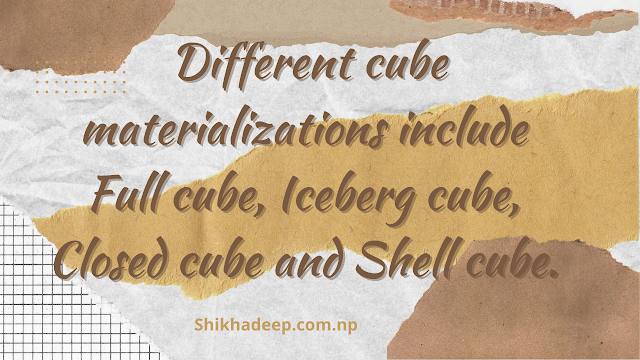Different cube materializations include Full cube, Iceberg cube, Closed cube and Shell cube.
Different cube materializations include Full cube, Iceberg cube, Closed cube, and Shell cube.
Full cube:
In order to ensure fast OLAP, it is sometimes desirable to precompute the full cube (L.e., all the cells of all of the cuboids for a given data cube). This, however, is exponential to the number of dimensions. That is, a data cube of n dimensions contains 2n cuboids. There are even more cuboids if we consider concept hierarchies for each dimension. In addition, the size of each cuboid depends on the cardinality of its dimensions. Thus, precomputation of the full cube can require huge and often excessive amounts of memory.
Iceberg cube:
lt contains only those cuboid cells whose measures satisfy the aggregate or iceberg condition. The aggregate condition could be, minimum support or a lower bound on average, min or max. It is called an iceberg cube because it contains only some of the cells of the full cube like the tip of an iceberg. The purpose of the Iceberg-cube is to identify and compute only those values that will most likely be required for decision support queries. The aggregate condition specifies which cube values are more meaningful and should therefore be stored. This is one solution to the problem of computing versus storing data cubes.
3. Closed cube:
It consists of only closed cells. A cell that has no descendant cell then it is a closed cell.
4. Shell cube:
Another strategy for partial materialization is to pre-compute only portions and fragments of the cube shell (cuboids involving small no. of dimensions such as 3 to 5), based on the cuboids of interest. For example, shell fragment cube ABC contains 7 cuboids: A, B, C, AB, AC, BC, and ABC).




Comments
Post a Comment